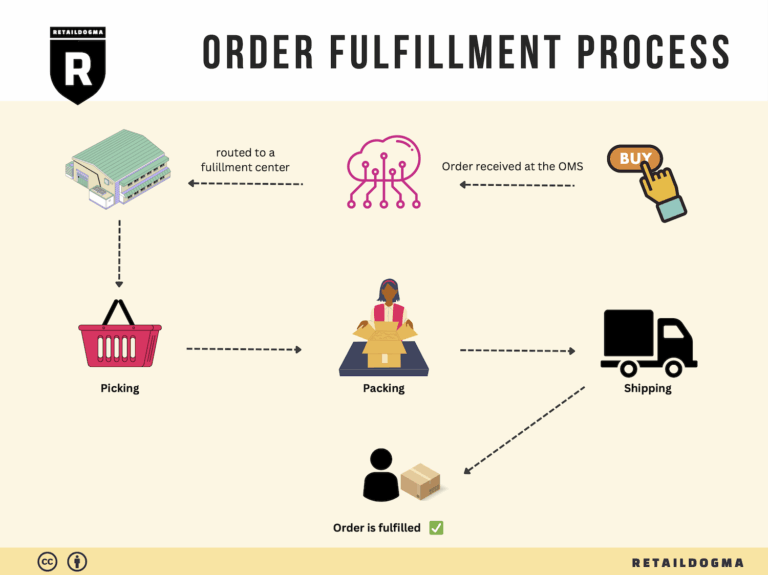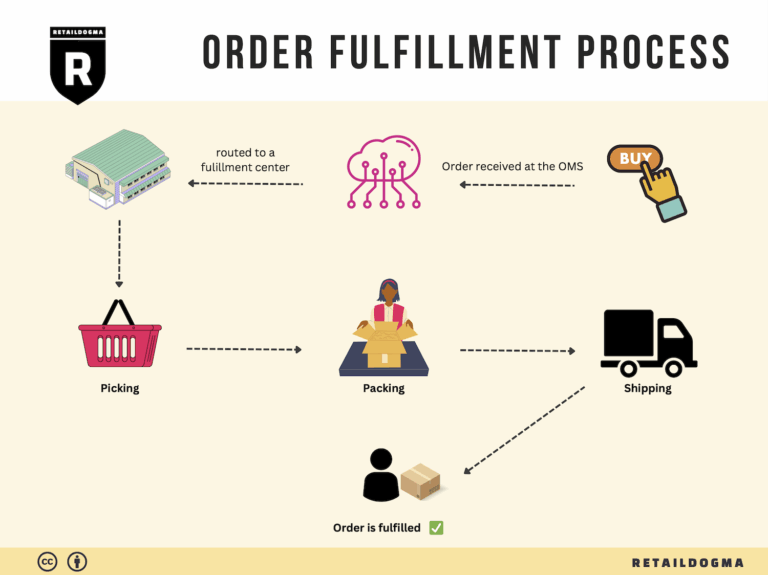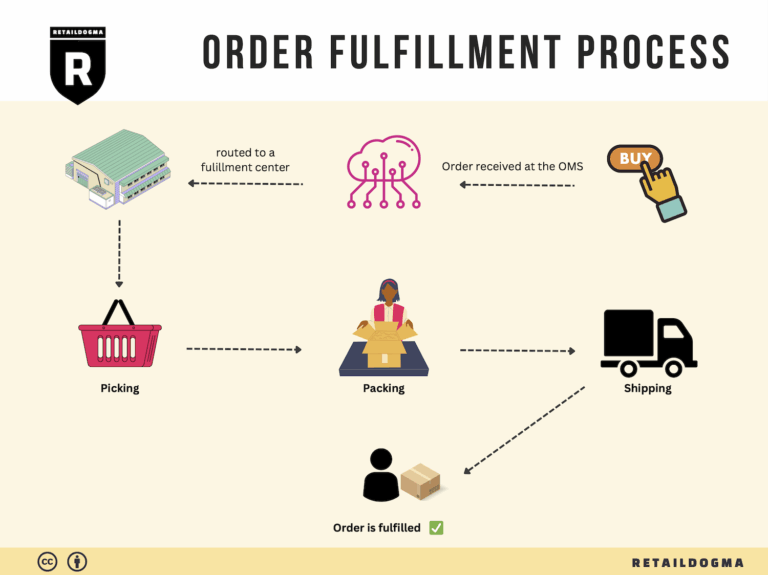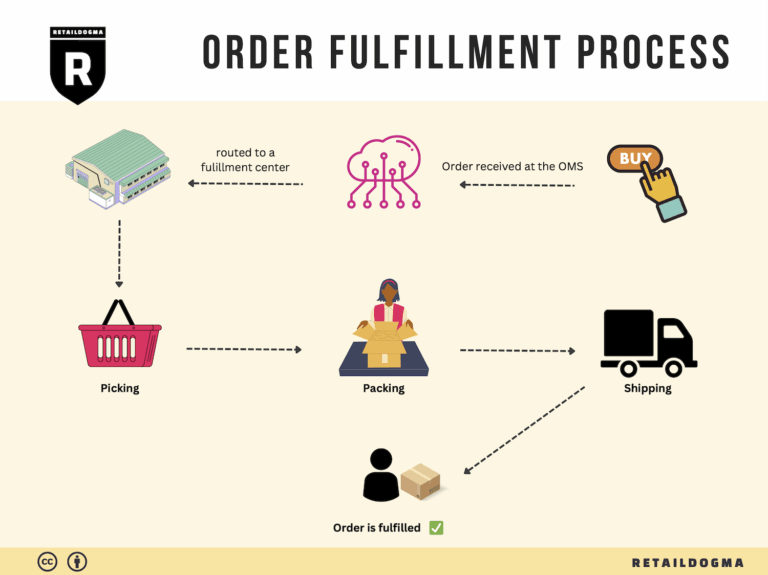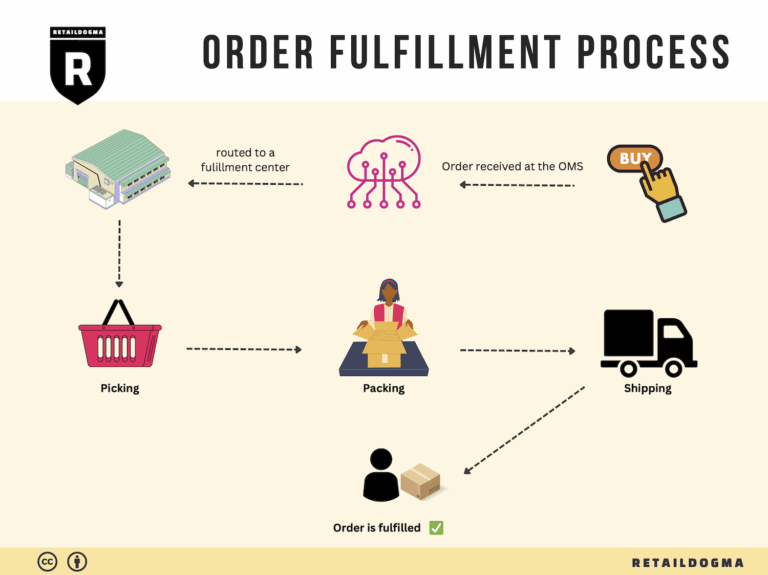How Order Fulfillment Works: A Step-by-Step Guide for Businesses
What is E-commerce Fulfillment? An Introduction for Growing Businesses
Understanding the Challenges of E-commerce Fulfillment
As your online business begins to grow, the excitement of increasing sales can quickly turn into the stress of managing logistics. One of the most common pain points for e-commerce entrepreneurs is becoming overwhelmed with packing and shipping orders. What once seemed manageable can rapidly escalate into a daunting task, consuming time and resources that could be better spent on scaling your business.
E-commerce fulfillment is the process of getting a product from your inventory to your customer’s doorstep. It encompasses everything from receiving and storing inventory, to picking and packing orders, and finally shipping them out. Effective fulfillment is crucial; it not only affects customer satisfaction but also impacts your bottom line. A well-optimized fulfillment process can help you maintain efficiency, reduce operational costs, and enhance the customer experience.
This guide aims to demystify e-commerce fulfillment by exploring various models available for growing businesses. We will delve into Third-Party Logistics (3PL) and Fulfillment by Amazon (FBA), two popular options that can help streamline your operations. Each model has its unique advantages and considerations, which we will outline to help you make informed decisions.
Additionally, we will cover the core services involved in e-commerce fulfillment, such as inventory management, order processing, and shipping logistics. Understanding these services is vital for selecting the right fulfillment partner that aligns with your business needs.
Choosing the right logistics partner can feel overwhelming, but it doesn’t have to be. This guide will provide you with practical tips on how to evaluate potential partners based on their capabilities, technology, and customer service. We’ll also discuss pricing structures, so you can gain a clear understanding of what to expect in terms of costs and how to budget accordingly.
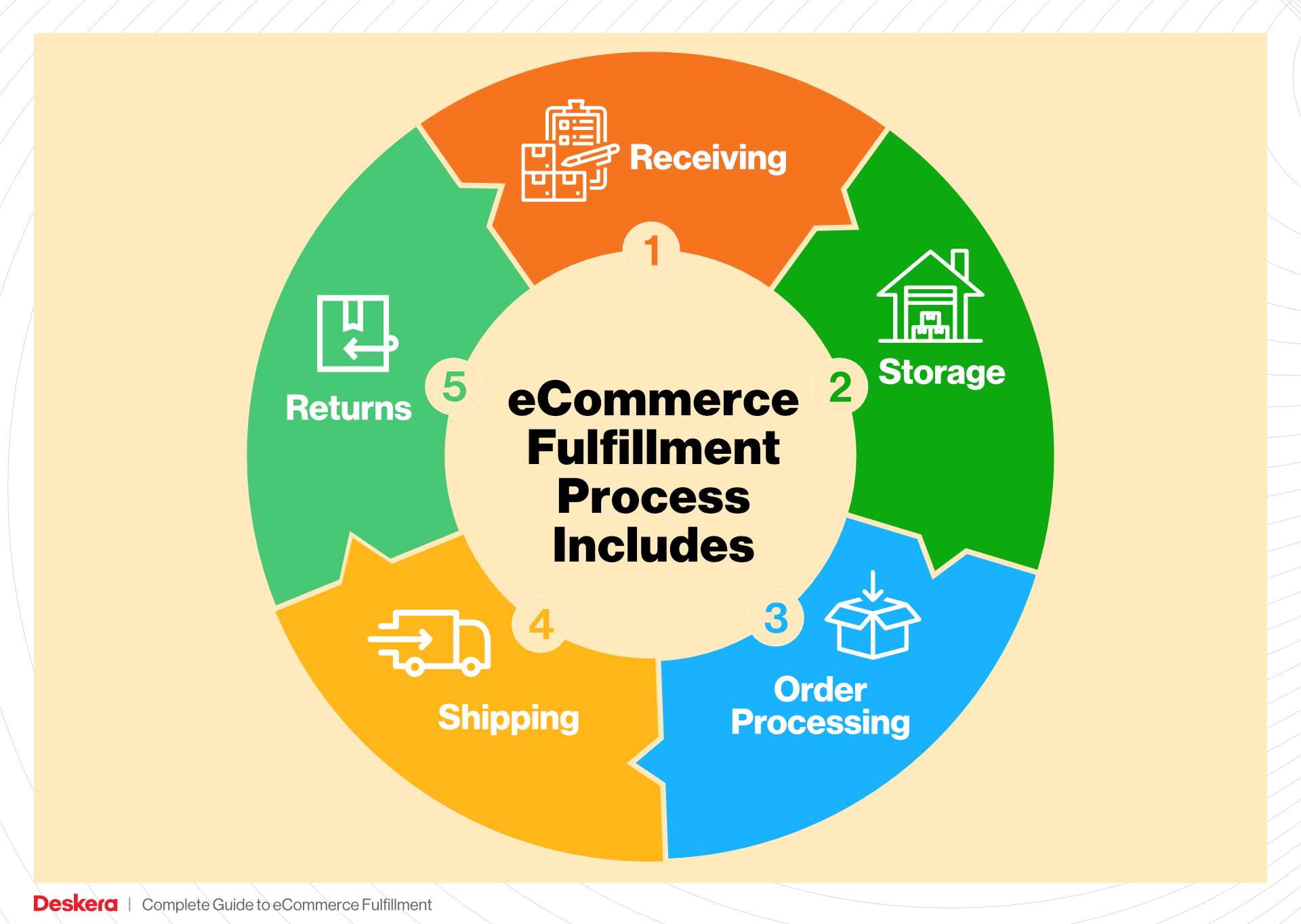
Ultimately, our goal is to empower you—whether you are an e-commerce business owner, an operations manager, or an entrepreneur—by equipping you with the knowledge to make smart decisions about your logistics. With the right fulfillment strategy in place, you can focus on what truly matters: growing your business and serving your customers effectively.
What You’ll Learn In This Guide
- What is E-commerce Fulfillment? An Introduction for Growing Businesses
- The Order Fulfillment Process: From ‘Buy’ Button to Customer’s Door
- Comparing Fulfillment Models: In-House vs. 3PL vs. Dropshipping
- A Deep Dive into Amazon FBA: Pros, Cons, and Who It’s For
- Core Services Offered by Fulfillment Centers
- How to Choose a Fulfillment Partner: A 6-Point Checklist
- Understanding Fulfillment Pricing: A Breakdown of Common Fees
- Frequently Asked Questions (FAQs) about Fulfillment
- Conclusion: Is Outsourcing Fulfillment the Right Move for Your Business?
- Important Disclaimer
The Order Fulfillment Process: From ‘Buy’ Button to Customer’s Door
1. Receiving Inventory
The order fulfillment process begins with receiving inventory at the fulfillment center. This step involves the physical intake of products from suppliers, which are then verified for accuracy against purchase orders. Each item is typically assigned a Stock Keeping Unit (SKU), a unique identifier that allows for efficient tracking and management of inventory levels.
Receiving inventory is crucial because it sets the foundation for all subsequent steps in the fulfillment process. If errors occur at this stage, they can cascade through the entire operation, leading to incorrect orders and customer dissatisfaction. Proper handling during the receiving process ensures that the right products are available for order fulfillment and allows businesses to maintain accurate inventory records, which is essential for effective supply chain management.
2. Warehouse Storage
Once the inventory has been received and verified, it is moved to designated storage areas within the warehouse. This step involves organizing products in a manner that optimizes space and facilitates easy access. Different storage methods may be employed, such as shelving, pallet racks, or bins, depending on the nature of the products and the layout of the warehouse.
Warehouse storage is significant because it directly impacts the efficiency of the order fulfillment process. An organized warehouse reduces the time employees spend locating items, which can significantly speed up order processing. Additionally, effective storage solutions help prevent damage to products and minimize the risk of stockouts. Utilizing a Warehouse Management System (WMS) can enhance the organization and tracking of stored items, improving overall operational efficiency.
3. Order Picking
Order picking is the process of retrieving items from their storage locations to fulfill customer orders. Employees or automated systems use pick lists, which detail the items and quantities needed for each order. The picking process can take several forms, including discrete picking (picking one order at a time), batch picking (picking multiple orders simultaneously), or zone picking (assigning specific areas of the warehouse to different pickers).
This step is vital because it directly affects order accuracy and fulfillment speed. Errors in picking can lead to customer dissatisfaction, increased return rates, and additional costs for the business. By implementing efficient picking strategies and technologies, such as barcode scanners or mobile picking devices, businesses can enhance accuracy and reduce the time it takes to complete orders, ultimately improving customer service.

4. Order Packing
After items are picked, they are sent to the packing station, where they are prepared for shipment. During this step, items are carefully packed into boxes or containers, and packing slips are generated to accompany the order. Businesses must consider various factors, such as packaging materials, weight, and dimensions, to ensure that products are protected during transit and that shipping costs are minimized.
Order packing is crucial because it not only impacts the safety of the products during delivery but also influences the overall customer experience. A well-packed order reflects professionalism and attention to detail, enhancing customer satisfaction. Additionally, incorporating technology such as packing software can streamline this process, ensuring that the right items are packed correctly and efficiently.
5. Shipping & Delivery
The final step in the order fulfillment process is shipping and delivery. Once the orders are packed, they are labeled and handed over to carriers for transportation to the customer’s address. Businesses often use multiple shipping carriers and services to provide customers with options regarding delivery speed and cost. Tracking systems are typically employed to allow customers to monitor their orders in real-time.
This step is essential as it determines how quickly and reliably customers receive their orders. Efficient shipping and delivery processes can significantly enhance customer satisfaction and loyalty. By analyzing shipping metrics and utilizing advanced logistics solutions, businesses can optimize their shipping strategies, reduce costs, and improve delivery times, ensuring that customers receive their orders promptly and accurately.
In conclusion, understanding and optimizing each step of the order fulfillment process is crucial for e-commerce businesses looking to scale their operations. By focusing on efficiency, accuracy, and customer satisfaction throughout the fulfillment journey—from receiving inventory to delivery—businesses can enhance their competitiveness in the ever-evolving e-commerce landscape.
Comparing Fulfillment Models: In-House vs. 3PL vs. Dropshipping
Fulfillment Model Comparison
| Model | Who Handles Inventory | Best For (Business Stage) | Key Advantage | Key Disadvantage |
|---|---|---|---|---|
| In-House Fulfillment | The business itself | Established businesses | Greater control over operations and branding | Higher overhead costs and staffing requirements |
| Third-Party Logistics (3PL) | Third-party logistics provider | Growing businesses scaling up | Scalable and flexible with lower upfront costs | Less control over fulfillment and shipping times |
| Dropshipping | Supplier or manufacturer | Startups and small businesses | Low initial investment and no inventory risk | Lower profit margins and potential quality issues |
In-House Fulfillment
In-house fulfillment involves managing the entire process of inventory storage, order processing, packing, and shipping within the business itself. This model is most suited for established businesses that have sufficient resources and a steady volume of orders. One of the primary advantages of in-house fulfillment is the level of control it offers; businesses can ensure that every aspect of the fulfillment process aligns with their brand standards and customer expectations. This control extends to quality assurance, packaging aesthetics, and the overall customer experience.
However, this model comes with significant challenges. The overhead costs can be substantial, as businesses need to invest in warehouse space, inventory management systems, and staff. Furthermore, as order volumes fluctuate, maintaining an efficient operation can become complex and costly. Companies must also manage logistics, which includes everything from shipping methods to delivery times, potentially leading to bottlenecks if not handled efficiently. Thus, while in-house fulfillment allows for enhanced control, it also demands a substantial commitment of resources and infrastructure.
Third-Party Logistics (3PL)
Third-party logistics (3PL) involves outsourcing logistics services to specialized firms that handle warehousing, fulfillment, and shipping. This model is particularly beneficial for growing businesses that are looking to scale their operations without the burden of managing logistics themselves. 3PL providers offer scalability and flexibility, allowing businesses to adjust their logistics needs based on demand without significant upfront investment in facilities or staff.
The key advantage of using a 3PL is the ability to leverage the expertise and established infrastructure of logistics providers. This can lead to improved efficiency and potentially lower costs, as 3PLs often have negotiated shipping rates and advanced technology solutions for inventory management. However, the downside is the reduced control over the fulfillment process. Businesses must rely on their 3PL partner for timely shipping and customer service, which can lead to issues if the provider does not meet expectations. Additionally, there may be challenges in terms of integration with existing systems and maintaining consistent branding in packaging and customer communication.
Dropshipping
Dropshipping is a fulfillment model where the retailer does not hold inventory but instead transfers customer orders directly to a supplier or manufacturer, who then ships the products directly to the customer. This model is particularly advantageous for startups and small businesses that wish to minimize initial investment and operational complexity. With dropshipping, businesses can offer a wide range of products without the risk of overstocking, as they only purchase items once a customer has placed an order.
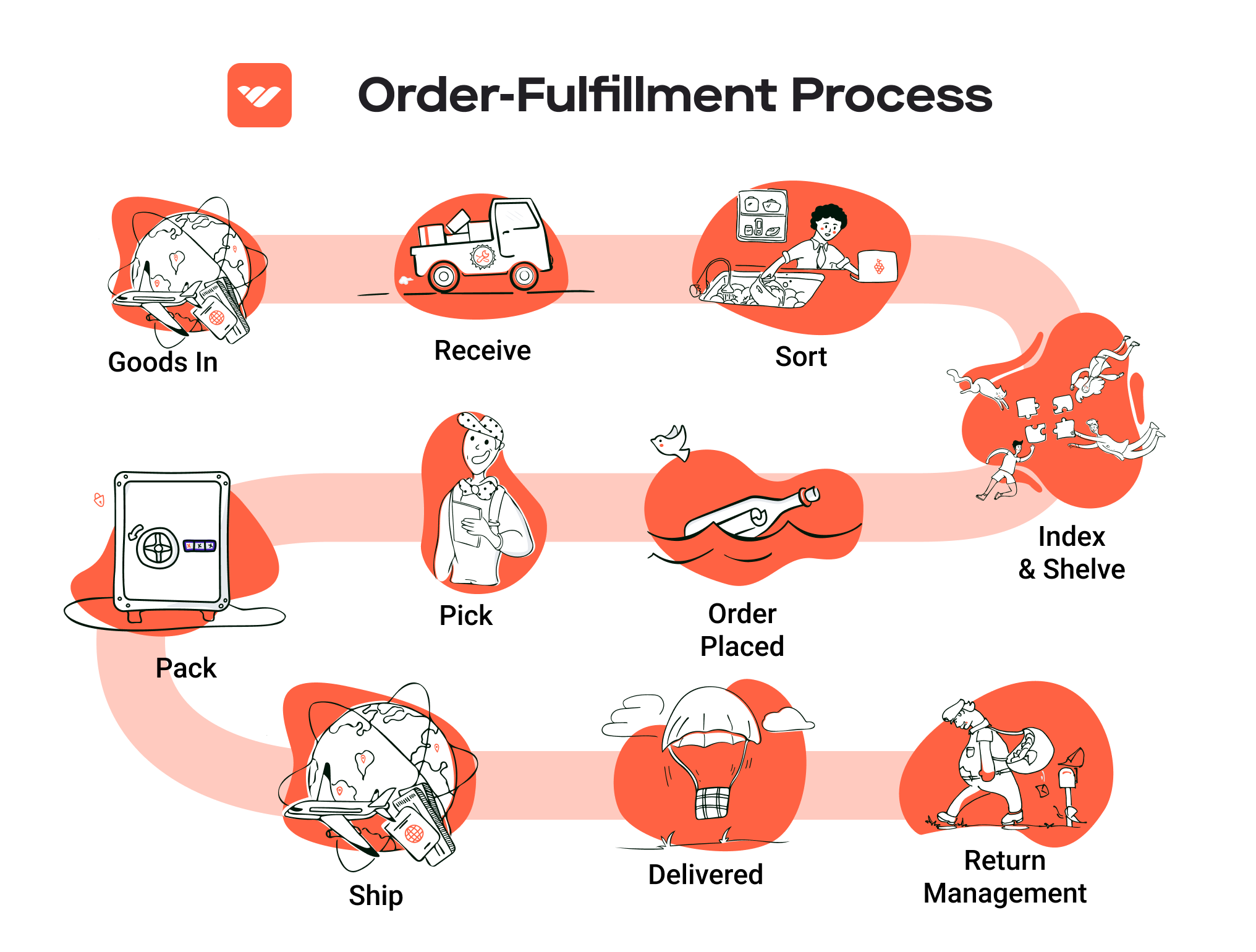
The primary advantage of dropshipping is the low barrier to entry; there’s no need for warehousing, inventory management, or fulfillment logistics. This allows entrepreneurs to focus on marketing and sales without the complexities of handling physical products. However, dropshipping also comes with significant disadvantages. The profit margins can be lower compared to other models, as suppliers typically take a substantial cut of the sale price. Additionally, businesses have limited control over product quality and shipping times, which can lead to customer dissatisfaction if not carefully managed. Furthermore, reliance on suppliers can create challenges in terms of inventory management, as stock levels may fluctuate unexpectedly, leading to potential order fulfillment issues.
In summary, each fulfillment model has its strengths and weaknesses, and the best choice depends on the specific needs and stage of the business. In-house fulfillment offers control but at a higher cost, while 3PL provides scalability with some loss of control. Dropshipping minimizes risk but can lead to lower margins and quality concerns. Business owners must carefully consider their operational capabilities, growth ambitions, and customer expectations when selecting the most appropriate fulfillment strategy.
A Deep Dive into Amazon FBA: Pros, Cons, and Who It’s For
Understanding Fulfillment by Amazon (FBA)
Fulfillment by Amazon (FBA) is a service that allows e-commerce sellers to store their products in Amazon’s fulfillment centers. Amazon then takes care of storage, packaging, and shipping products directly to customers on behalf of the sellers. This service is particularly attractive for small and medium-sized businesses looking to leverage Amazon’s vast logistics network and customer base.
When a seller uses FBA, they send their products to Amazon’s warehouses. Once a customer places an order, Amazon handles the entire fulfillment process—from picking the item off the shelf, packing it, and shipping it to the customer, to managing returns and customer service inquiries. This allows sellers to focus on other aspects of their business, such as product development and marketing, while benefiting from Amazon’s extensive reach and credibility.
How FBA Works
-
Sign Up for FBA: Sellers need to have an Amazon Seller account and can enroll in the FBA program through their seller dashboard.
-
Prepare Products: Sellers must prepare their products according to Amazon’s guidelines, which include labeling, packaging, and choosing the right fulfillment center.
-
Ship Products to Amazon: After preparation, sellers ship their products to one or more of Amazon’s fulfillment centers. The shipping process can be managed through Amazon’s partnered carriers, which may offer discounted rates.
-
Listing Products: Once the products are in Amazon’s warehouses, sellers can create listings for them. Products fulfilled by Amazon are eligible for Prime and other Amazon services.
-
Customer Orders: When a customer places an order for an FBA product, Amazon picks, packs, and ships the item. The seller is notified of the sale, and Amazon handles customer inquiries and returns.
-
Payment and Fees: Sellers receive payments for their sales, minus the fees associated with using FBA. These fees can vary based on product size, weight, and storage duration.
Pros of Using FBA
-
Prime Eligibility: Products fulfilled by Amazon are automatically eligible for Amazon Prime, which can significantly increase visibility and sales. Prime members often prefer products that can be delivered quickly and at no additional shipping cost.
-
Customer Trust: Amazon is a recognized and trusted brand. By using FBA, sellers can leverage Amazon’s reputation, which can lead to higher conversion rates. Customers are more likely to buy products that are fulfilled by Amazon due to the assurance of quality service and easy returns.
-
Multi-Channel Fulfillment: FBA allows sellers to fulfill orders from other sales channels, such as their own website or eBay, using Amazon’s logistics. This flexibility can streamline operations and reduce complexity in managing multiple inventory sources.
-
Scalability: As businesses grow, FBA allows for easy scaling. Sellers can expand their product lines and reach without needing to invest heavily in their own warehousing or logistics.
-
Access to Advanced Logistics: Sellers benefit from Amazon’s sophisticated logistics network, including fast shipping and returns management. This can significantly enhance customer satisfaction and loyalty.
Cons of Using FBA
-
High Fees: FBA fees can be substantial, including storage fees, fulfillment fees, and additional charges for long-term storage. For sellers with low margins or seasonal products, these costs can eat into profits.
-
Strict Inventory Rules: Amazon has stringent rules regarding inventory management, including limits on how much stock sellers can store and how to handle unsold inventory. Failing to comply can result in additional charges or account suspension.
-
Commingling Risks: With FBA, sellers’ products may be mixed with other sellers’ products in Amazon’s warehouses. This commingling can lead to potential issues, such as receiving returns for products that are not yours or quality control concerns.
-
Loss of Control: By outsourcing fulfillment to Amazon, sellers lose some control over the customer experience. Any delays or issues in fulfillment can reflect poorly on the seller’s brand, even if they are outside the seller’s control.
-
Complex Return Processes: While Amazon handles returns, the process can be complex for sellers. Products returned to Amazon may not always be returned to the seller in sellable condition, impacting inventory levels and profitability.
Who is FBA Best For?
Fulfillment by Amazon is best suited for sellers who have a solid understanding of the e-commerce landscape and are ready to scale their operations. Here are a few types of sellers who might find FBA particularly beneficial:
-
Small to Medium-Sized Businesses: Businesses that lack the infrastructure for logistics and fulfillment can benefit from FBA’s capabilities, allowing them to focus on growth without the headache of managing logistics.
-
New Entrepreneurs: New sellers can quickly leverage Amazon’s platform and logistics without upfront investment in warehousing and shipping infrastructure.
-
Sellers with High Sales Volume: Those who have a consistent sales volume can better absorb FBA fees and maximize the benefits of Prime eligibility and enhanced customer trust.
-
Multi-Channel Sellers: Businesses that sell on multiple platforms can streamline their operations through FBA, using Amazon’s fulfillment for all their sales channels.
In conclusion, while FBA offers numerous advantages such as access to Amazon’s extensive customer base and streamlined logistics, it also comes with challenges that require careful consideration. Businesses should evaluate their specific needs and circumstances to determine if FBA aligns with their growth strategy and operational capabilities.
Core Services Offered by Fulfillment Centers
Inventory Management & Warehousing
Inventory management and warehousing are foundational services offered by fulfillment centers, crucial for e-commerce businesses looking to optimize their supply chain. These centers provide a secure and organized environment where products can be stored, tracked, and managed efficiently.
Effective inventory management involves real-time tracking of stock levels, ensuring that businesses have an accurate understanding of their inventory at any given moment. Fulfillment centers utilize advanced technology, such as barcode scanning and inventory management software, to streamline this process. This not only reduces the risk of overstocking or stockouts but also enhances order accuracy.
The benefits of robust inventory management are manifold. First, it allows e-commerce businesses to maintain optimal stock levels, which is essential for meeting customer demand without tying up unnecessary capital in excess inventory. Additionally, improved visibility into inventory can lead to better forecasting and planning, enabling businesses to respond swiftly to market trends and seasonal fluctuations. In essence, by leveraging the inventory management capabilities of a fulfillment center, businesses can enhance their operational efficiency and customer satisfaction.
Pick and Pack Services
Pick and pack services are integral to the fulfillment process, directly impacting the speed and accuracy of order delivery. This service involves the selection (picking) of items from the warehouse shelves and packaging (packing) them for shipment to customers. Fulfillment centers employ sophisticated technology and trained staff to ensure that this process is executed efficiently.
The benefits of effective pick and pack services are significant. For starters, fulfillment centers often utilize automated systems and robotics to speed up the picking process, reducing labor costs and minimizing human error. This efficiency translates into faster order processing times, which is critical in today’s competitive e-commerce landscape where customers expect quick delivery.
Moreover, fulfillment centers typically offer customizable packing options to enhance branding and customer experience. Businesses can choose eco-friendly packaging, branded materials, or specific presentation styles to align with their marketing strategies. This level of customization not only helps in creating a memorable unboxing experience for customers but also fosters brand loyalty.
Kitting and Assembly
Kitting and assembly services are valuable offerings for e-commerce businesses that sell products requiring assembly or bundling. This service involves combining multiple individual items into a single package (kitting) or assembling products before shipment. Fulfillment centers are equipped to handle such tasks efficiently, allowing businesses to focus on core operations.
The primary benefit of kitting and assembly services is the time saved for e-commerce businesses. By outsourcing these tasks to fulfillment centers, companies can streamline their operations and reduce the complexity of order fulfillment. This is particularly advantageous for businesses that offer complex products, such as furniture or electronic devices that require assembly.
Additionally, kitting can enhance product appeal by presenting items as a cohesive package, which can increase perceived value and encourage higher sales. For instance, bundling complementary products can create attractive offers that entice customers, ultimately leading to increased order value and improved customer satisfaction.
Returns Management (Reverse Logistics)
Returns management, or reverse logistics, is a critical component of the fulfillment process that many e-commerce businesses overlook. Fulfillment centers provide a streamlined returns management system, allowing customers to return products easily and businesses to process these returns efficiently.
The benefits of effective returns management are substantial. First, a well-organized return process enhances customer satisfaction by making it easy for customers to return items, thereby reducing the friction often associated with online shopping. This is particularly important in e-commerce, where the inability to physically inspect products before purchase can lead to dissatisfaction.
Furthermore, fulfillment centers can inspect returned items, determine their condition, and reintegrate them into inventory if they are in sellable condition. This not only minimizes losses from returns but also helps businesses recover some of the costs associated with unsold inventory. Additionally, efficient returns management can provide valuable insights into product performance and customer preferences, allowing businesses to refine their offerings and improve overall sales strategies.
In conclusion, leveraging the core services offered by fulfillment centers—inventory management and warehousing, pick and pack services, kitting and assembly, and returns management—can significantly enhance the operational efficiency of e-commerce businesses. By outsourcing these functions, businesses can focus on growth and customer engagement, ultimately leading to increased sales and profitability.
How to Choose a Fulfillment Partner: A 6-Point Checklist
Location & Warehouse Network
Importance: The geographical location of your fulfillment partner’s warehouses can significantly impact shipping times and costs. A strategically placed partner can help you reach your customers faster and reduce transportation expenses.
Questions to Ask:
– Where are your warehouses located, and how many do you operate?
– How does your warehouse network align with my target markets?
– What are your shipping capabilities (e.g., same-day, next-day delivery)?
– Do you offer regional distribution centers that can help optimize delivery speed?
Technology & Integrations
Importance: In today’s e-commerce environment, technology plays a crucial role in efficient order processing, inventory management, and tracking. Your fulfillment partner should have robust technological capabilities that integrate seamlessly with your e-commerce platform.
Questions to Ask:
– What order management system (OMS) do you use, and how does it integrate with platforms like Amazon, Shopify, or WooCommerce?
– Do you provide real-time inventory tracking and reporting?
– Can your system handle order automation, and what APIs are available for integration?
– How often do you update your technology, and what is your approach to data security?
Specializations (e.g., Cold Storage, Oversized Items)
Importance: If your product line includes unique items such as perishables, oversized goods, or hazardous materials, it’s essential to partner with a fulfillment center that specializes in these areas. Specialized capabilities can help ensure compliance and proper handling.
Questions to Ask:
– Do you have specific capabilities for handling cold storage or temperature-sensitive items?
– What is your experience with oversized or bulky items, and what special equipment do you have to manage them?
– Are you compliant with all necessary regulations for handling specialized products?
– Can you provide case studies or references for your experience in my product category?
Scalability & Capacity
Importance: As your business grows, your fulfillment needs may change. A good partner should be able to scale operations to accommodate increased order volumes without compromising service quality.
Questions to Ask:
– What is your current capacity, and how do you handle peak seasons or unexpected surges in orders?
– Do you have a plan for expanding warehouse space or capabilities if needed?
– How quickly can you scale your operations to meet my growing needs?
– What strategies do you have in place for managing inventory during high-demand periods?
Pricing and Contracts
Importance: Understanding the pricing structure and contract terms is essential to avoid unexpected costs. Transparent pricing allows you to budget effectively and assess the overall value of your fulfillment partner.
Questions to Ask:
– What is your pricing model (e.g., per order, per item, monthly fees)?
– Are there additional fees for storage, packaging, or shipping?
– What are the terms regarding contract length and cancellation?
– Can you provide a detailed breakdown of all costs involved?
Customer Support & Reviews
Importance: Reliable customer support can help you resolve issues quickly and maintain a smooth operation. Additionally, researching reviews and testimonials can provide insights into the partner’s reputation and reliability.
Questions to Ask:
– What customer support options do you offer (e.g., phone, email, chat)?
– What are your average response times for support inquiries?
– Can you provide references or testimonials from current clients?
– How do you handle disputes or issues that may arise during the fulfillment process?
Conclusion
Choosing the right fulfillment partner is a critical decision that can significantly influence your e-commerce business’s efficiency and customer satisfaction. By using this checklist, you can systematically evaluate potential partners and ensure they align with your operational needs and growth objectives. Prioritize your requirements based on your business model, and don’t hesitate to ask for detailed information to make an informed choice. A well-chosen fulfillment partner can be a key asset in scaling your business effectively.
Understanding Fulfillment Pricing: A Breakdown of Common Fees
Initial Setup Fees
Initial setup fees are typically one-time charges that e-commerce businesses incur when they first engage with a fulfillment center. These fees can cover various administrative costs associated with onboarding your products into the fulfillment system. They might include costs for account setup, software integration, and initial training for your team on how to use the fulfillment platform effectively.
The calculation of initial setup fees can vary widely among providers, often ranging from $0 to several hundred dollars, depending on the complexity of your product catalog and the fulfillment center’s specific requirements. Some fulfillment centers may waive these fees if you meet a minimum order threshold or agree to a long-term contract.
Receiving Fees
Receiving fees are charged when your inventory arrives at the fulfillment center. These fees cover the labor and resources required to unload, inspect, and enter your products into the warehouse management system.
Typically calculated on a per-pallet or per-box basis, receiving fees can range from $5 to $30 or more, depending on the size and weight of your shipments. For example, larger shipments that require more handling may incur higher fees. It’s essential to communicate with your fulfillment provider about their specific receiving procedures, as any additional services, such as quality checks or labeling, can also add to these costs.
Storage Fees (per pallet/bin)
Storage fees are ongoing costs associated with keeping your inventory in the fulfillment center. These fees can be calculated on a per-pallet or per-bin basis, depending on how your products are stored.
The rates can vary significantly, often ranging from $10 to $50 per month per pallet, depending on the location of the fulfillment center and the demand for storage space. Additionally, some fulfillment centers offer tiered pricing, where the rate decreases as you store more pallets. Be mindful of any minimum storage requirements, as you may be charged even if your inventory is below a certain threshold.
Pick & Pack Fees (per item/order)
Pick and pack fees are charged for the process of selecting items from your inventory and preparing them for shipment. These fees can vary based on the complexity of the order, the number of items being picked, and any special packing requirements you may have.
Typically, fulfillment centers charge a flat fee per order, ranging from $1 to $5, plus an additional fee per item, which can be around $0.20 to $1.00. For instance, if a customer orders three items, you might incur a base fee of $3 for the order, plus $0.50 for each item, totaling $4.50. Understanding the breakdown of these fees is crucial, as they can significantly impact your overall fulfillment costs, especially during peak seasons.
Shipping Fees
Shipping fees are one of the most variable costs associated with fulfillment and can depend on multiple factors, including package weight, dimensions, destination, and the shipping method selected. Fulfillment centers often partner with major carriers, and they may pass along their negotiated rates to you, which can sometimes be lower than standard retail shipping costs.
Shipping fees can be calculated as flat rates or based on weight brackets. It’s common to see rates ranging from $5 to $20 for standard shipping within the U.S., with additional costs for expedited shipping options. Be sure to clarify whether the shipping fees include tracking and insurance, as these can also affect your overall shipping costs.
Tips for Getting an Accurate Quote
-
Provide Detailed Product Information: When requesting a quote, provide comprehensive details about your products, including dimensions, weight, and any special handling requirements. This information helps fulfillment centers give you a more accurate quote.
-
Understand Your Volume: Be clear about your expected order volume. Many fulfillment centers offer discounts for higher volumes, so knowing your projections can lead to better pricing.
-
Inquire About Additional Services: Ask about any additional services you may need, such as kitting, custom packaging, or returns handling. These can significantly affect your overall costs.
-
Request a Breakdown of Fees: Ensure that you receive a detailed breakdown of all potential fees. This transparency will help you understand how costs can accumulate and allow for better budgeting.
-
Negotiate Terms: Don’t hesitate to negotiate terms, especially if you’re committing to a long-term partnership. Many fulfillment centers are open to adjusting fees based on your business needs.
By understanding these common fees and how they are calculated, you can make informed decisions about your fulfillment strategy, ultimately leading to better cost management and enhanced operational efficiency.
Frequently Asked Questions (FAQs) about Fulfillment
1. What is the Amazon Fulfillment Center TLH2?
The Amazon Fulfillment Center TLH2, located in Tallahassee, Florida, is a state-of-the-art distribution facility covering 630,000 square feet. It employs advanced robotics to efficiently pick, pack, and ship a variety of small items, including electronics, books, and toys, to customers across the region. This facility is part of Amazon’s extensive logistics network and aims to enhance delivery speed and service quality.
2. What types of products are fulfilled at TLH2?
The TLH2 fulfillment center primarily handles small items such as books, electronics, toys, and other consumer goods. Its design focuses on maximizing efficiency for products that are typically ordered online, ensuring they reach customers quickly and reliably.
3. How does the fulfillment process work at TLH2?
The fulfillment process at TLH2 involves several key steps:
1. Receiving: Products arrive at the facility, where they are checked in and stored.
2. Picking: Robotics and employees work together to select items from storage based on customer orders.
3. Packing: Selected items are packed into boxes, which are then labeled for shipping.
4. Shipping: Packed orders are sent out to delivery networks for final delivery to customers.
This streamlined process allows Amazon to efficiently handle a high volume of orders.
4. What is the difference between a warehouse and a fulfillment center?
A warehouse is primarily used for storage of goods, whereas a fulfillment center is specifically designed for processing orders and shipping products directly to customers. Fulfillment centers integrate inventory management, order processing, and logistics to ensure timely deliveries, while warehouses may not have the same operational capabilities.
5. What is a 3PL, and how does it relate to Amazon fulfillment?
A 3PL, or third-party logistics provider, is a company that offers logistics services to businesses, including warehousing, inventory management, and order fulfillment. While Amazon’s fulfillment centers like TLH2 operate as in-house logistics solutions, businesses can choose to partner with 3PLs for outsourcing their fulfillment needs, especially if they prefer not to manage their own warehouses.
6. How much do fulfillment services cost?
Fulfillment service costs can vary widely based on several factors, including:
– Volume of orders: Higher volumes may lead to lower per-order costs.
– Type of services needed: Basic storage and shipping may cost less than specialized services like kitting or custom packaging.
– Location: Costs can also differ based on geographic location and shipping distances.
It’s essential for businesses to analyze their specific needs and obtain quotes from fulfillment providers to estimate costs accurately.
7. How can businesses benefit from using TLH2?
Businesses can benefit from using the TLH2 fulfillment center by leveraging Amazon’s extensive logistics network, which can enhance delivery speed and reliability. Additionally, using TLH2 allows businesses to scale their operations without the need for significant investments in infrastructure and labor, as they can tap into Amazon’s advanced technology and workforce.
8. What are the employment opportunities at TLH2?
The TLH2 fulfillment center has created over 1,000 full-time jobs, offering competitive wages and benefits. Positions include roles in operations, robotics, management, and more. Employees also have access to Amazon’s Career Choice Program, which provides educational benefits to help them advance their careers.
9. What sustainability practices are in place at TLH2?
Amazon is committed to sustainability across its operations, including at TLH2. This includes energy-efficient building designs, waste reduction programs, and initiatives to minimize the carbon footprint of logistics operations. The facility also utilizes advanced robotics to optimize energy use and reduce operational waste.
10. How does TLH2 impact the local economy?
The opening of the TLH2 fulfillment center is expected to have a significant positive impact on the local economy, with an estimated economic impact of over $451 million. It has created numerous job opportunities, stimulated local businesses, and provided a boost to the community through investments in infrastructure and partnerships with local firms.
Conclusion: Is Outsourcing Fulfillment the Right Move for Your Business?
Evaluating the Benefits of Outsourcing Fulfillment
Outsourcing fulfillment can be a game-changer for e-commerce businesses aiming to scale effectively. By partnering with a fulfillment service, businesses can save significant time and resources. This allows owners and managers to focus on strategic initiatives, such as product development and marketing, rather than the logistical challenges of order processing and shipping.
Another critical advantage of using a fulfillment service is scalability. As your business grows, so too does the complexity of logistics. A fulfillment partner provides the flexibility to adjust operations based on demand fluctuations, particularly during peak seasons. This adaptability ensures that you can meet customer expectations without the burden of managing increased operational overhead.
Additionally, fulfillment centers bring a wealth of expertise in logistics management. With advanced technologies—such as robotics and automated inventory systems—like those seen in Amazon’s new Tallahassee fulfillment center, these partners can streamline operations and enhance accuracy. This expertise not only reduces the risk of errors but also improves overall customer satisfaction through timely and accurate order fulfillment.
However, it is crucial to choose the right fulfillment partner. The wrong choice can lead to inefficiencies, increased costs, and ultimately, dissatisfied customers. Assess potential partners based on their technology capabilities, service offerings, and ability to scale with your business.
Take Action
As you consider whether outsourcing fulfillment is the right move for your business, conduct a thorough audit of your current shipping processes. Identify bottlenecks, inefficiencies, and areas where a fulfillment partner could add value. This analysis will not only clarify your needs but also help you make an informed decision about the next steps in your growth journey. Investing in the right fulfillment solution could be the key to unlocking new levels of success for your e-commerce business.
Important Disclaimer
⚠️ Important Disclaimer
The information in this guide is for educational purposes. Fulfillment services, pricing, and platform features change frequently. Always conduct your own due diligence and consult with providers directly before making business decisions.


